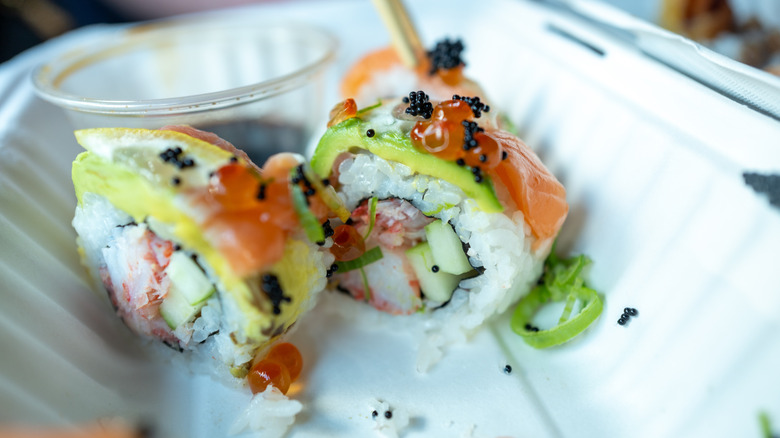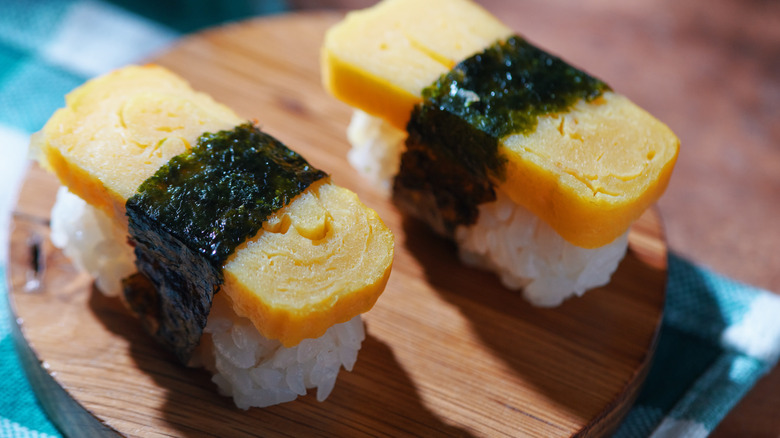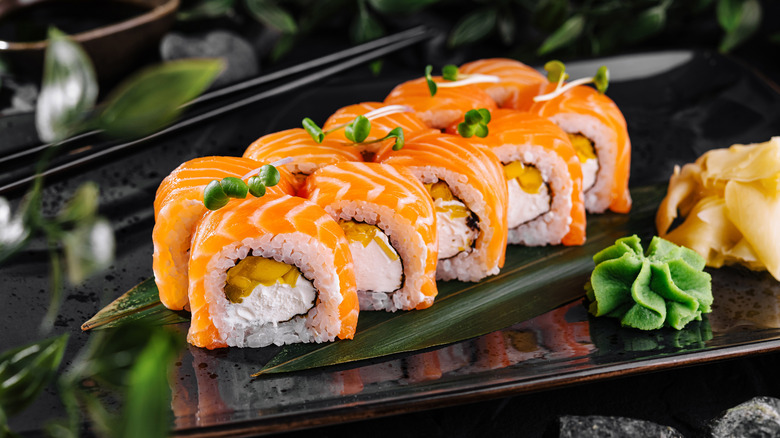This Is How Long Leftover Sushi Is Good For In The Fridge
If you ordered a feast of delivery sushi and didn't quite finish it all, you might be wondering if it will keep until the next day. It's a fair question — sushi is hardly a budget meal, and it feels like a terrible waste to just throw the leftovers away. However, sushi isn't the kind of food you want to take risks with. Many types of sushi include raw seafood, which is more susceptible to bacteria and parasites compared to cooked seafood. Rice can also be a bit tricky, as dangerous bacteria can develop if the rice is left at room temperature for too long. And, annoyingly, refrigerated rice gets so dry and hard that it can easily become unenjoyable.
The absolute best way to enjoy sushi — both store-bought and takeout varieties — is to eat it the day you purchase it. If you really want to avoid wasting your leftovers, the length of time your sushi will keep depends on the toppings.
The USDA recommends that raw seafood be kept refrigerated for up to two days — but it's essential to remember that it has already been refrigerated for many hours during its journey to your dining table. Unfortunately, it's impossible to know exactly how old your fish is, or when it was purchased or defrosted, which is why it's so hard to pinpoint how long it will keep.
Which sushi toppings last the longest?
Unsurprisingly, the topic of leftover sushi is also brought up pretty often in Japan — and you can find sources discussing the "himochi," or the length of time a food will keep, for various ingredients. As you might expect, non-seafood ingredients that last the longest. The most common of these in Japan are kappa maki (cucumber) and tamagoyaki (cooked egg). In the West, you might also see other types of sushi that come cooked, such as chicken or beef, along with other types of vegetarian rolls.
But even though your toppings might last a few days, the rice will likely still spoil your fun. After a night in the fridge, even tightly wrapped rice will dry out and harden quite a lot, and since you might not want to warm it up to bring a bit of life back into it, you'd just have to eat it as is.
For fish, akami tuna might be one of the most resilient varieties because it's less fatty than a tuna belly cut like otoro. If you wrap it well, there's a chance it will survive until the next morning. Signs of spoilage include dark discoloration on the fish, a dried-out texture, and sour aromas. Of course, if you left your tuna at room temperature for more than a couple of hours, you shouldn't try to save it for the next day.
Which sushi toppings spoil the quickest?
Most other types of seafood won't last as well as lean tuna. Raw shrimp dries out very easily, squid gets slimy and inedible, and white fish such as mackerel or sardines contain more fat and start to oxidize quickly. All of these ingredients are fairly likely to show some manner of discoloration or odor after a night in the fridge, so you should inspect them very carefully if you're going to try it.
The riskiest fish of them all, however, is salmon. It's very fatty and spoils quickly, and could therefore cause a foodborne illness. It shouldn't be kept at room temperature, and if you see any white discoloration, you shouldn't eat it. It's highly recommended to eat salmon sushi the day you purchase it, and not bother risking it the next morning. Sushi spoils so quickly and is so difficult to store correctly that many people won't even eat at a sushi buffet or buy grocery store sushi — so you should definitely take warnings about leftover sushi seriously.


